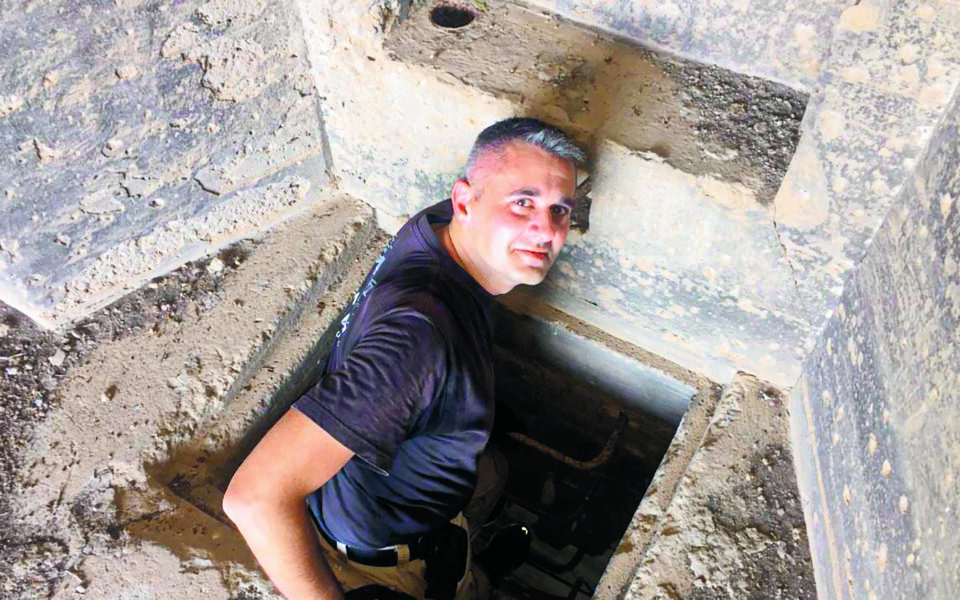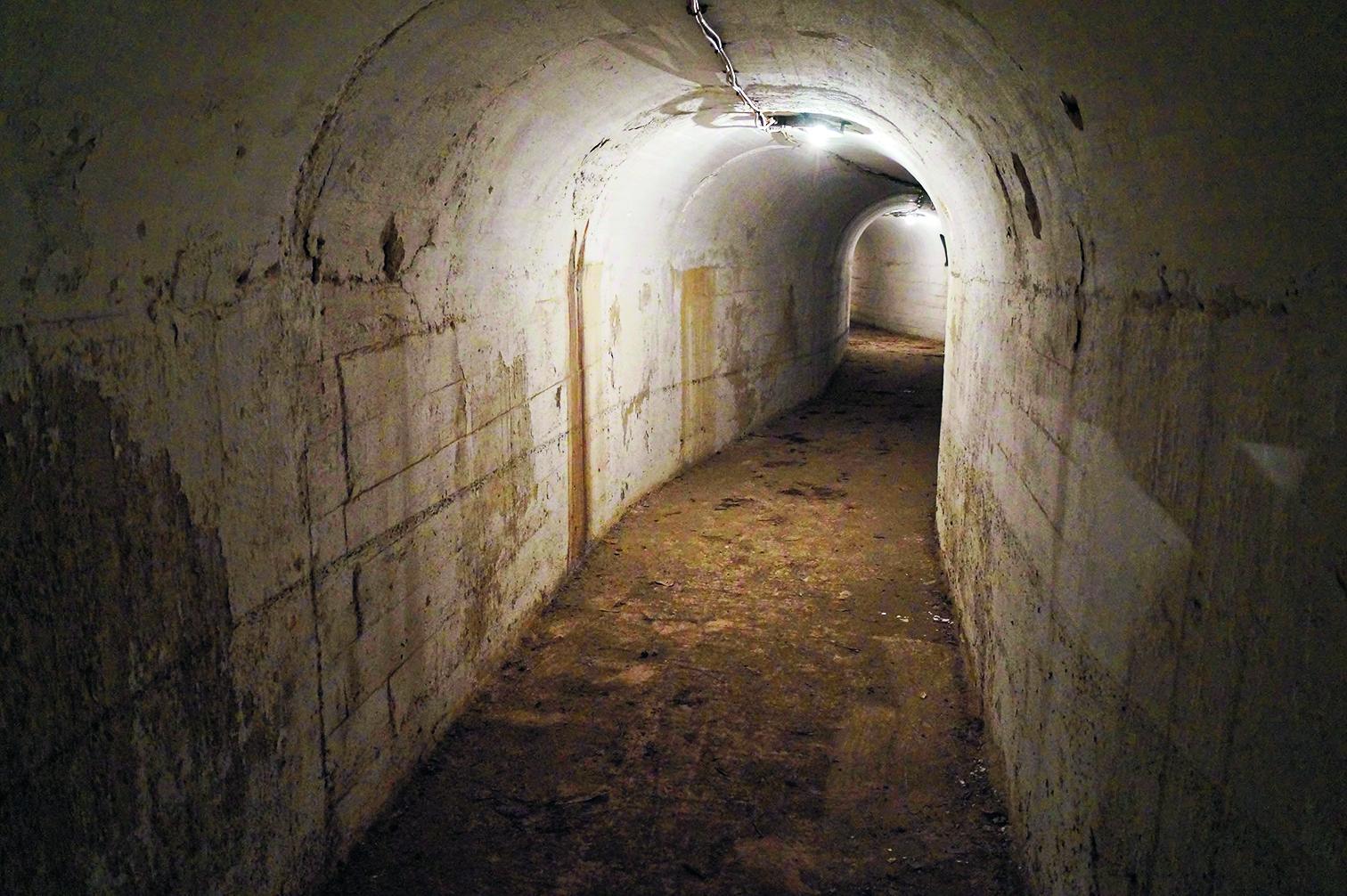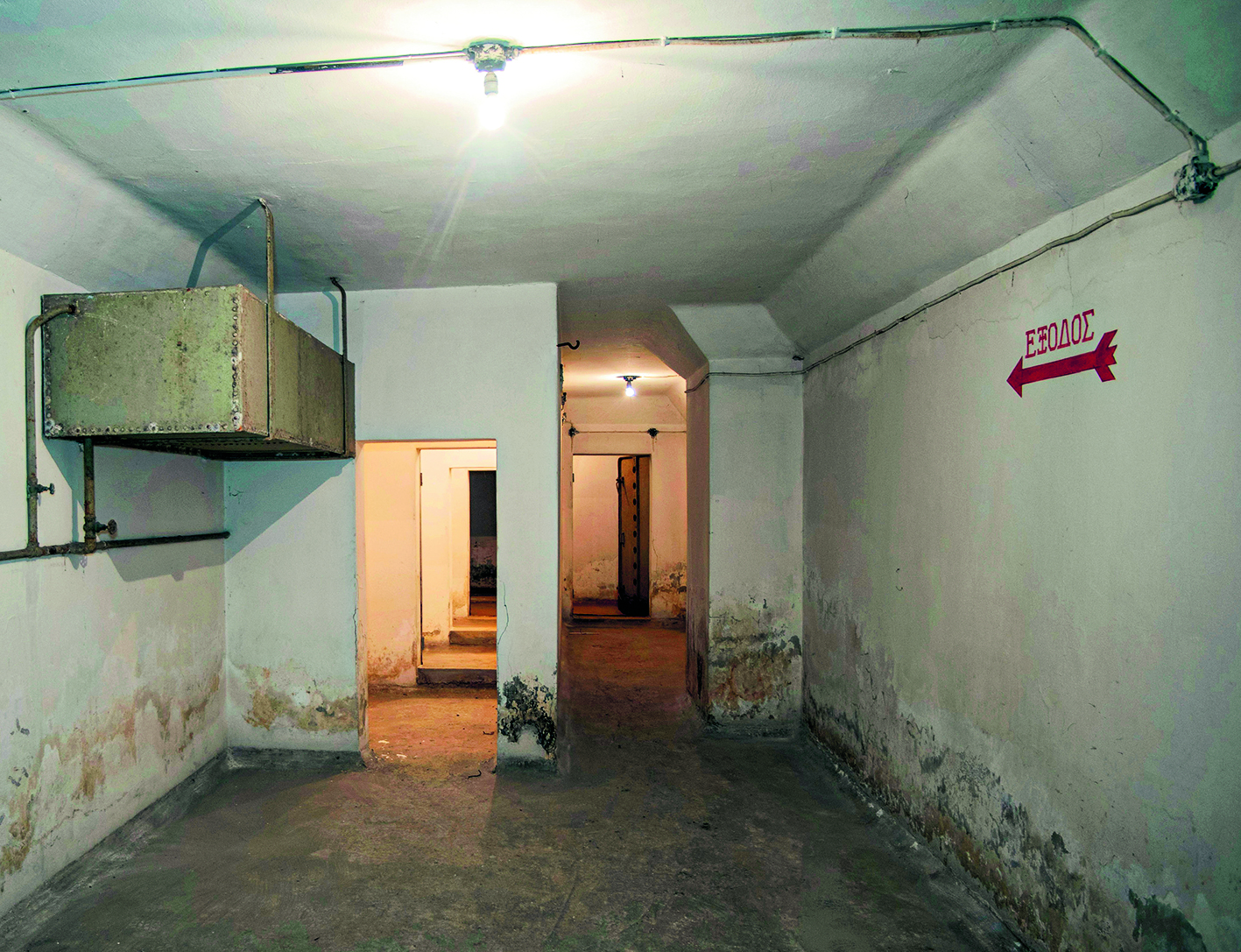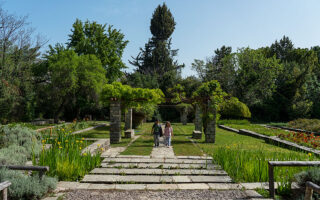The forgotten, invisible safe spaces under Athens
Author and researcher Konstantinos Kyrimis visits and records the Greek capital’s pre-war air raid shelters and shares their history

A network of thousands of underground spaces are scattered beneath Athens. Pedestrians hurry past them, not suspecting that the metal lid of a manhole they have just stepped on is one of the gates to a vast web of spaces, which for decades has been sealed in silence and oblivion. Athens’ bomb shelters were established by the regime of General Ioannis Metaxas before the Second World War, in the years 1936-1940, which the author and researcher Konstantinos Kyrimis has been methodically recording for over a decade. Kyrimis spoke to Kathimerini about those underground spaces, revealing a different, unknown aspect of urban history.
How did this adventure begin for you?
Having visited an air raid shelter in Piraeus 12 years ago, I became interested to know if there were more, as well as whether I could visit them. Along the way, I saw that not only were there many similar shelters from the time of World War II, but also that they had played a major role in society at the time. I considered the lack of bibliography that I discovered to be a kind of historical injustice and so I decided to continue the research and write a series of books on the subject, for the benefit of our historical memory as well as future researchers.
What were the first conclusions and what were the first important steps of your research?
Initially I was captivated by the purely aesthetic value of these spaces, how atmospheric they were and what fascinating images and experiences they could offer. Then I saw that there is another element of interest, their actual construction, as I understood that it was not enough to build a basement and call it a “war shelter,” but that it had to follow a series of strict specifications.
Above all, however, I saw that the whole issue contained a very important social dimension, whether this meant the impact of shelters on the psychology of citizens or the education they had to acquire in order to use them or the urban myths and passions that these inspired.
A field of study, therefore, with various dimensions.
Exactly, and I understood this well when my first book came out, because this is how I identified my readership, which included military history buffs, “urban explorers,” architects or folklorists. That is, a wide audience, where each person approached the subject from their own starting point.

What kinds of difficulties did you face doing the field research?
The biggest difficulty was actually locating the places. Some were referred to in archives, some others were tips offered by my readers, I learned about several others by asking, and in the case of even more, I hit a dead end. Another difficulty was locating the person in charge of each site and trying to convince them to allow me to visit.
The collaboration I started with the Army History Directorate was the catalyst that opened many doors for me, both literal and figurative, whether that means accessing places I would never be able to go as a private person or using valuable archival material. So when I gained the much-desired access, sometimes a series of on-site dangers arose, such as poor sanitary conditions. Sometimes I left such places with bronchitis. Additionally, several areas were flooded, while others had structural stability problems.
There were also times when I found traces of delinquent people in my exploration whom, fortunately, I did not run into, as such chance encounters in underground and “hidden” spaces are always potentially dangerous. That’s why I never go on these trips alone – there’s always at least two of us together.
‘Spatially, the shelter of Lycabettus Hill is very impressive, because it was not built for the civilian population, but as a center for air defense operations, while the shelter on Ardittos Hill has a nominal capacity of over 1,300 people’
How many shelters have you visited and how many are there in total in Athens?
I have visited at least 150 shelters so far. In the archives of the army there is an official report that the Metaxas regime built about 400 public shelters in Athens, while it imposed by law the construction of a shelter in every newly erected building, with the total of these rising to the dizzying number of 5,500. These shelters were of purely military type, made with strict specifications. But there are also what are called “conversion shelters” – i.e. existing underground spaces (tunnels, basements of buildings, caves etc) – that were structurally strengthened and turned into shelters. So we find in the archives the impressive information that the [Second World] War began with Athens having a total of 12,000 air raid shelters.
Can you give us some interesting examples of such shelters in the city center?
I can mention two in a very central area, which are a few meters from Syntagma Square. One is 400 sq.m. in total and is located on Karageorgi Servias Street and the other is 200 sq.m. and is hidden under Voulis Street. Spatially, the shelter of Lycabettus Hill is very impressive, because it was not built for the civilian population, but as a center for air defense operations.
It is also worth mentioning the shelter on Ardittos Hill, which has a nominal capacity of over 1,300 people.
It is, therefore, a whole network of underground spaces that are not in public view.
Indeed, and it is very fascinating that while they are in such central places, they manage to keep their inner footprint hidden. However, at the time they were built, they were anything but secret.
In fact, it was mandatory that they carry special markings so that all citizens knew where they were. As one chronicler wrote in 1941, all Athenians knew where the nearest shelter was to their work or home. It was something like a “common secret” of the time.
What did your research reveal to you about society at the time?
How these shelters constituted an underground society and a mirror of the time. Of great interest is the fact that the then sharp distinction between rich and poor was automatically canceled within them. This distinction sometimes worked well and sometimes it didn’t.
There are, for example, reports about ladies of “good society” who complained that they did not want to be in the same room as “common people.” On the contrary, there are reports of rich people who welcomed their neighbors to their shelter with sweets. Generally speaking, the air raid shelters of Athens formed a classless society.
Were these shelters ultimately successful? And were they eventually used?
Metaxas had understood that the airplane was the great danger for urban residents of the time and, in the context of the civil protection he implemented, we can say that they were an extremely successful project. In the end, Athens was not bombed, but let’s not forget the shelters of Piraeus (fewer than in Athens and mainly under industrial structures) which got their money’s worth, since the area was bombed by the Germans, the Italians, and, worst of all, by the Allies. I would even say that it is a historical paradox that they protected us more from our allies than from our own enemies. However, there are also reports that they were used to protect the civilian population during the Dekemvriana [the Battle for Athens, December 1944 – January 1945] as well. So, for five years, they protected us from our enemies, from our allies, and from ourselves.
Konstantinos Kyrimis’ self-published books on the air raid shelters of Attica are available by contacting him by email: [email protected]. His two-volume work “The Shelters of Attica, 1936-1956” is available (in Greek) by contacting the Army History Directorate. Organized visits to selected shelters are carried out by the travel agency Kedros Travel, with the participation of the author. Information at [email protected].






